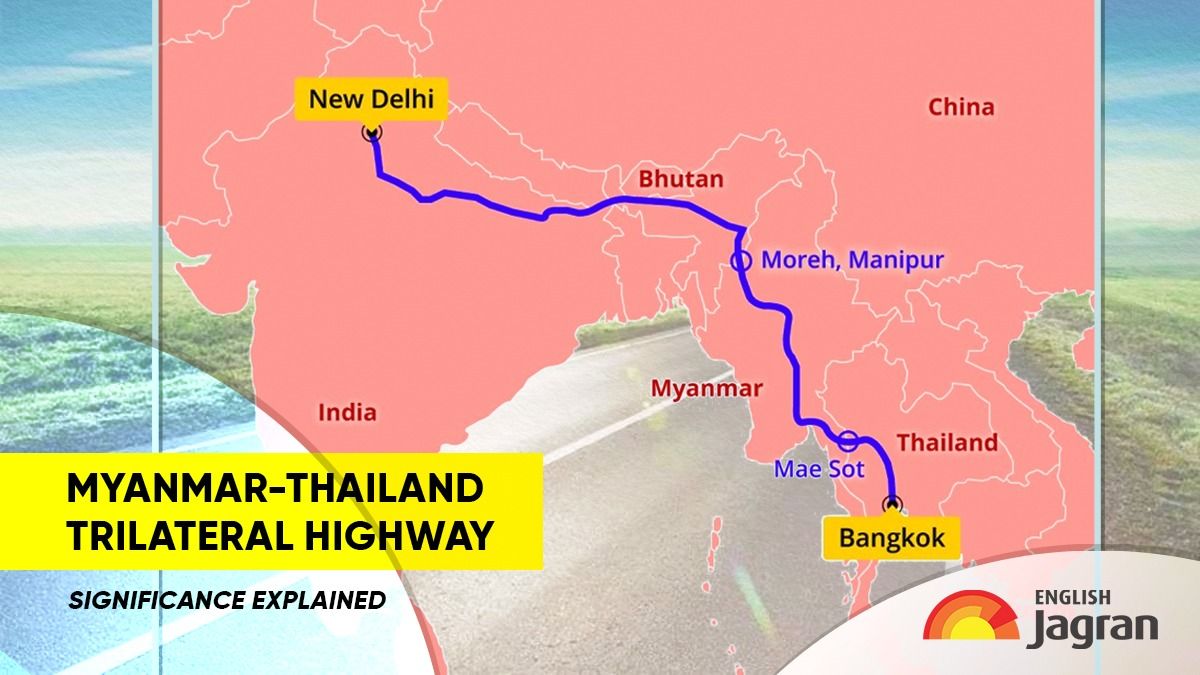- By Ashita Singh
- Fri, 21 Jul 2023 07:17 AM (IST)
- Source:JND
The India-Myanmar-Thailand (IMT) Trilateral Highway is an ambitious project of the government of India that aims to open the gate to the Association of Southeast Asian Nations, (ASEAN) through the land. This regional infrastructure project aims to enhance connectivity between the three countries. It seeks to link India's northeastern states, Myanmar, and Thailand, creating a seamless road network for the movement of goods and people.
Under India's Look East Policy, the ambitious Trilateral Highway (TLH) project was conceived as a crucial component of enhancing connectivity between India and the Southeast Asian nations. The inception of the idea occurred during the trilateral ministerial meeting on transport linkages held in Yangon in April 2002.
India Trilateral Highway Construction:
The TLH will connect Moreh, India with Mae Sot, Thailand via Myanmar. The Trilateral Highway in Myanmar will be constructed in two sections: (1) the construction of the 120.74 km Kalewa-Yagyi road section, and; (2) the construction of 69 bridges along with the approach road on the 149.70 km Tamu-Kyigone-Kalewa (TKK) road section. Both projects are being funded by the Government of India under grant assistance to Myanmar.
The National Highways Authority of India (NHAI) has been appointed as the technical executing agency and project management consultant. It will be a four-lane highway which is approximately 1,360 km (850 mi).
Several sections of the IMT Trilateral Highway were completed, and work was ongoing to finalize the entire route. The construction of the highway involves the development of roads, bridges, and related infrastructure in the participating countries. The government was aiming to make the roadways operational by December 2019, however, the construction was delayed as Myanmar is gripped under violence and therefore the construction was not possible.
Most of the work of the expressway based in Thailand is already complete, a Thailand minister told The Millenium Post. Meanwhile, the Imphal-Moreh portion of the highway on the Indian side is expected to be completed this year and the portion passing through Myanmar in another three years.
India- Myanmar-Thailand Highway Significance Explained:
The ambitious project will boost trade and commerce in the ASEAN–India Free Trade Area, as well as with the rest of Southeast Asia. The IMT Trilateral Highway holds substantial strategic and economic importance for all the three nations involved.
Regional Connectivity: The highway will establish direct road connectivity between India, Myanmar, and Thailand, unlocking new trade routes and facilitating faster transportation of goods and services as the India-Myanmar-Thailand highway, connecting Moreh in Manipur and Mae Sot in Thailand via Myanmar, was made to establish a seamless, efficient and end-to-end transportation corridor along the existing Trilateral Highway and its extension towards Cambodia, Laos, and Vietnam.
Trade and Investment: The highway is expected to bolster trade between the northeastern states of India and Southeast Asian countries. It offers an alternative land route for goods from India to reach markets in Southeast Asia and vice versa, reducing reliance on maritime routes and cutting down transportation costs and time.
Boost to Northeast India: The highway project holds immense potential for the landlocked northeastern states of India, as it provides them with a direct trade link to Southeast Asia.
Geostrategic Importance: The IMT Trilateral Highway is part of India's "Act East Policy," aimed at strengthening relations with Southeast Asian countries and countering China's influence in the region. It showcases India's commitment to regional connectivity and integration.

